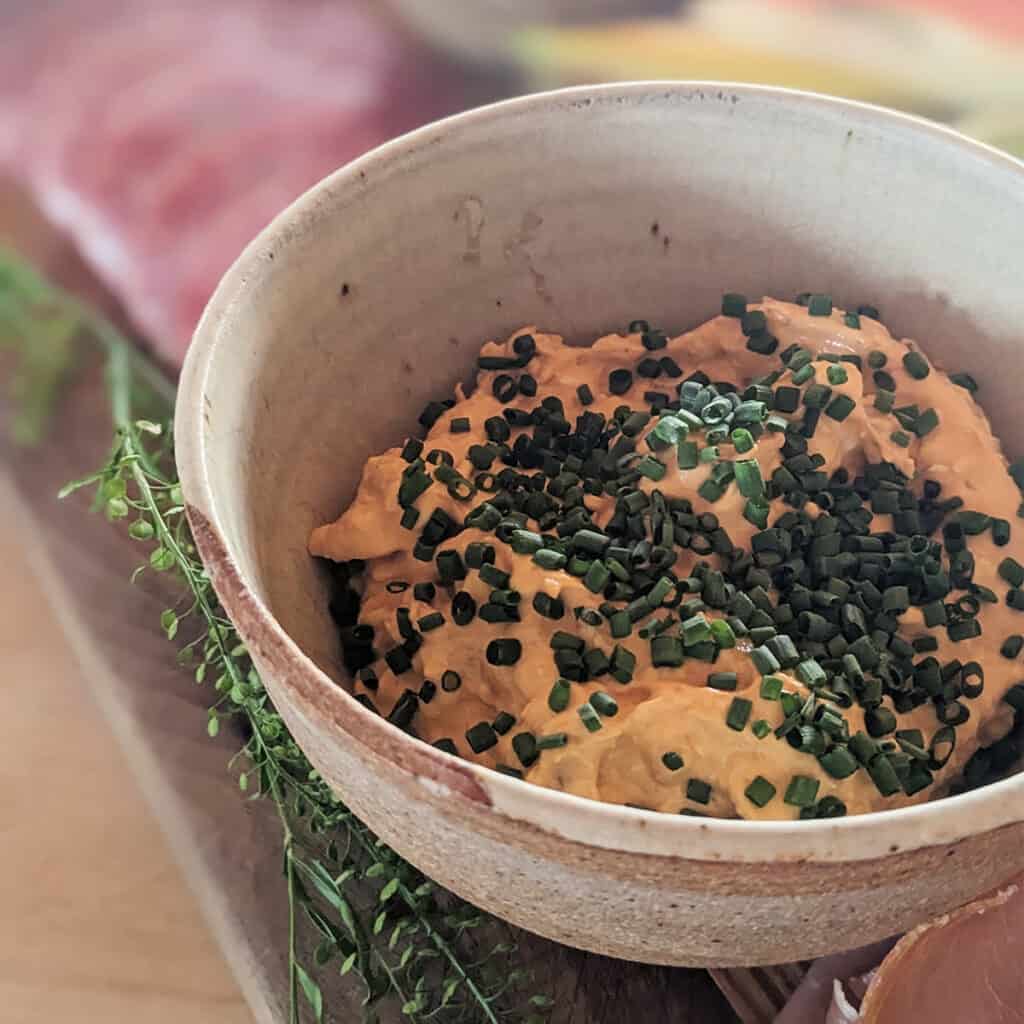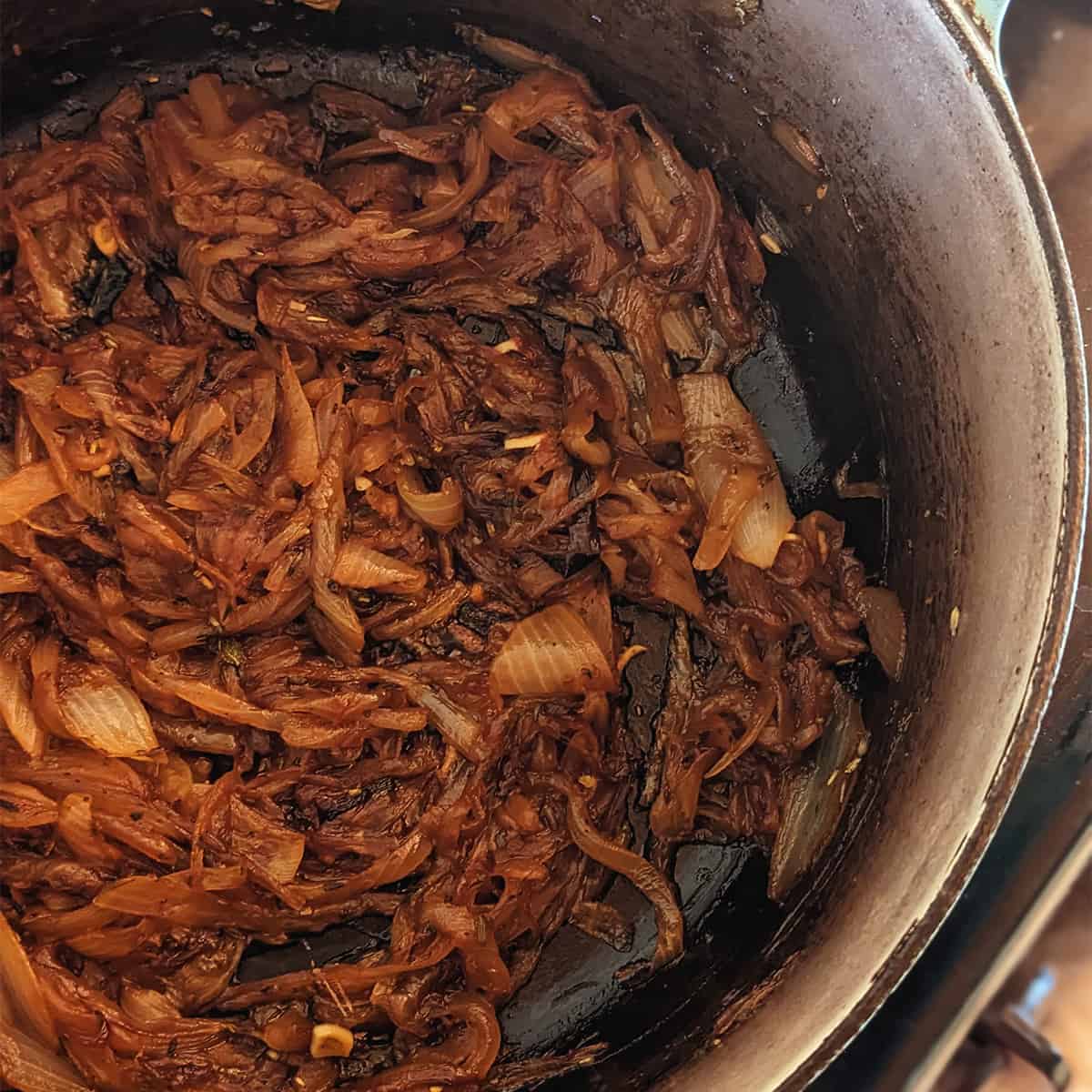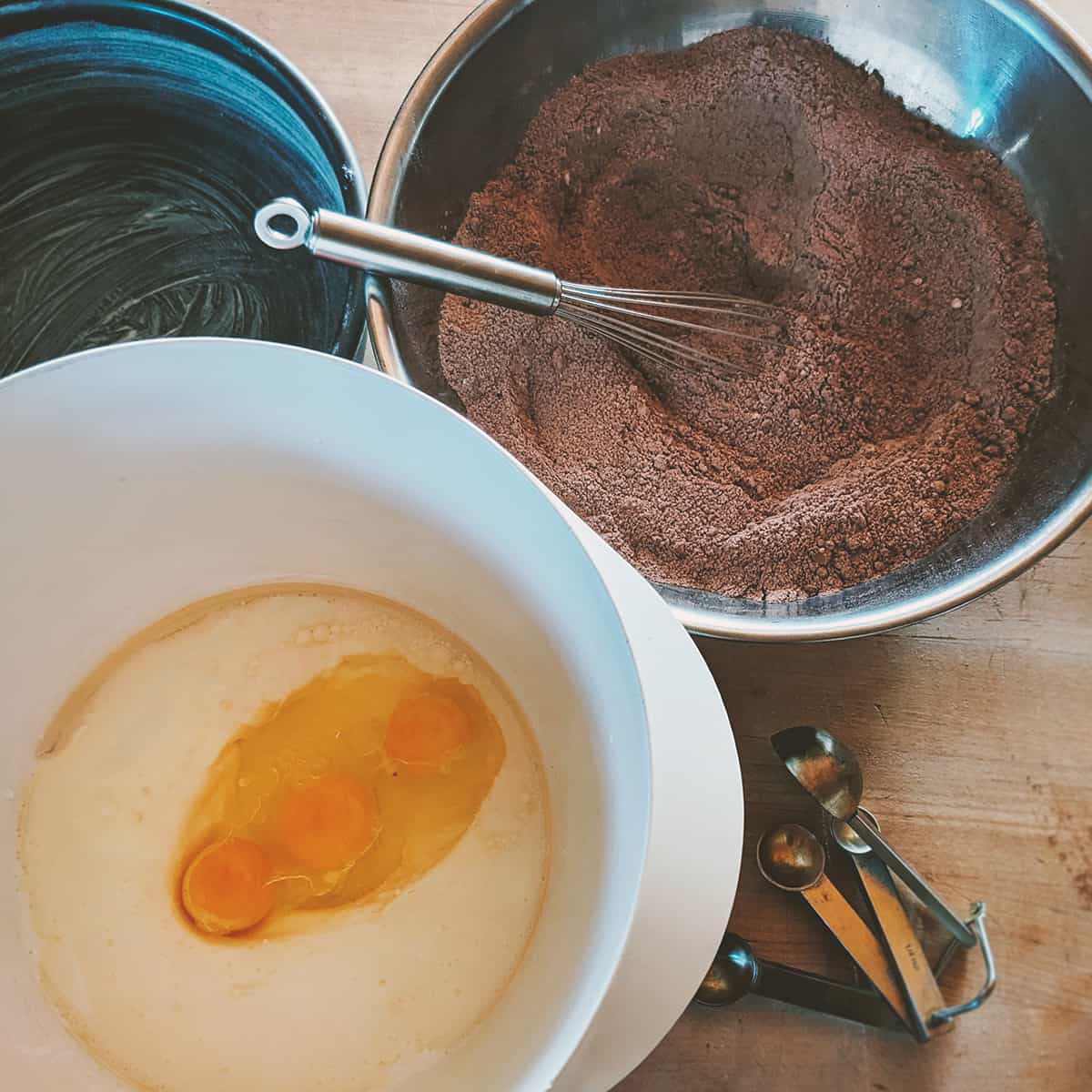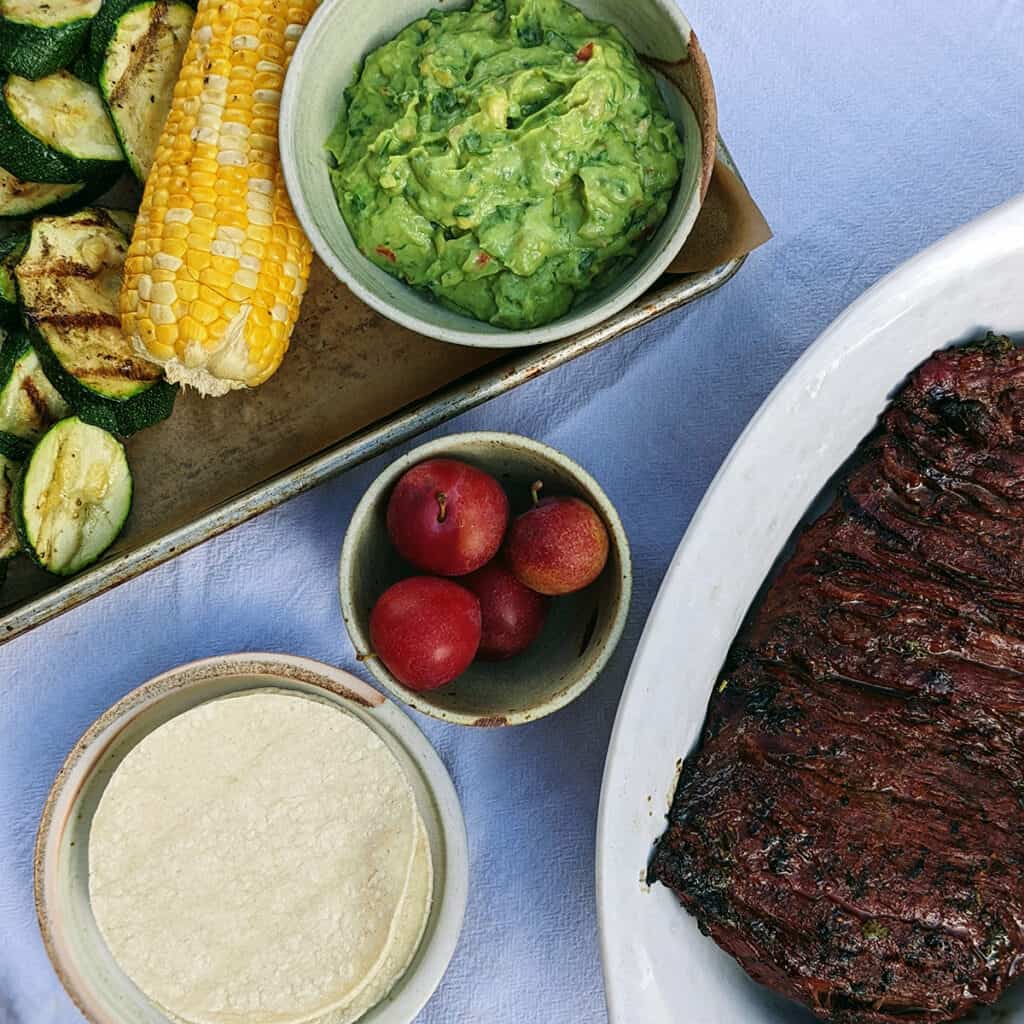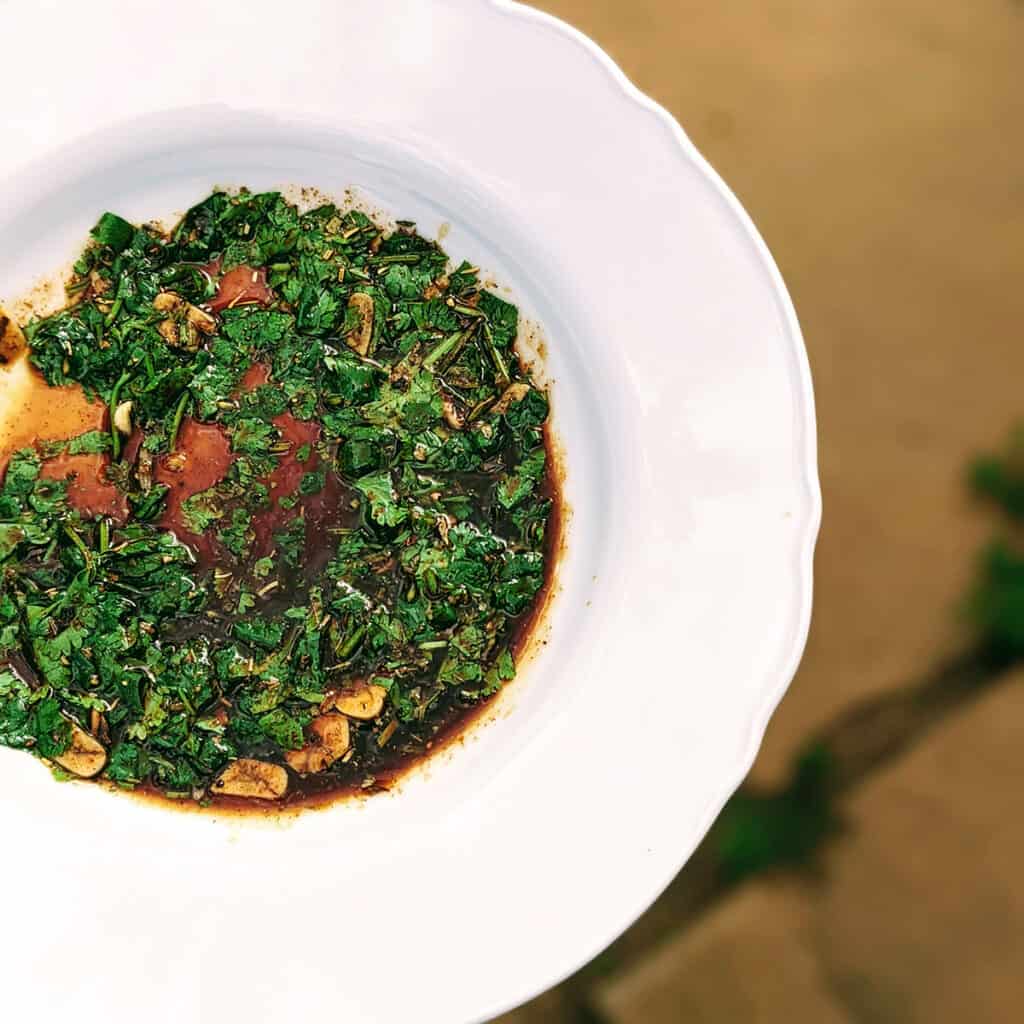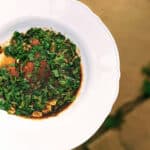When I spooned up a bowl of this authentic chicken pozole for my husband last week, the first thing he said was “this tastes like New Mexico”. I cannot think of a better compliment than this. This is a simple soup that takes some time to make, but I promise it’s worth it. There are many kinds of posole, so to celebrate the full arrival of Spring, I decided to make one loaded with greens.
When I arrived home after picking up a bag of Posole at the Santa Fe Farmers Market, I noticed a little piece of paper inside the ziplock bag with a recipe for “Raul’s Posole”. The recipe was for a pork and red chile version where you put pork and posole into a pot with water, and let it cook for a couple of hours before adding red chile, salt, pepper, garlic, and tomatoes before garnishing with chopped onions and oregano. The next time I make a pot of posole I will definitely try Raul’s recipe. The generosity of recipe sharing is how I’m learning to cook here and each time is a gift.
When it comes to posole, I’ve probably learned the most while hanging out in the kitchen with Chefs Lois Ellen Frank and Walter Whitewater. They taught me that while there are many ways of cooking posole, soaking the corn overnight in the fridge is a great way to jump-start the process for cooking the next day. And their favorite way of cooking posole is overnight in a crock pot covered with water. The next day, you will have fluffy and tender posole for however, you plan on using it. So feel free to experiment with cooking posole either of these ways. And as always, you can always shorten the cooking time for this recipe with cans of hominy if you find that helpful.
You’ll notice that in this recipe I give estimates for the number of garlic and tomatillos. The main reason for this is that tomatillos and garlic cloves come in a variety of sizes. If you’re using garlic cloves that are close to the center of a head of garlic, the cloves will be smaller. So just use the number that feels good to you.
When I make this recipe, I like to make the broth, pick the chicken meat and soak the posole the day before. This way, when I actually make the soup the next day, everything feels fast and easy. If you’re crunched for time you can buy chicken broth at the store and/or simmer chicken breasts or thighs in the broth until they are cooked through before pulling the meat into bite-sized pieces. And while you’re at it, if you don’t care about the broth being a bright green, you can skip the blending and simply add minced parsley and cilantro to the warm soup right before serving.
So while you can make a pot of posole about a hundred different ways, make it work for you. I’d be willing to bet it will still taste like New Mexico in the best of ways.
PrintSpring Chicken Posole Verde
When I spooned up a bowl of this Spring Posole for my husband last week, the first thing he said was “this tastes like New Mexico”. I cannot think of a better compliment than this.
- Prep Time: 2 hours
- Cook Time: 1 hour
- Total Time: 3 hours
- Yield: around 12 servings
- Category: Soup
- Method: Slow Cook
- Cuisine: New Mexico Inspired
Ingredients
for the hominy (posole):
- 1 1/2 c. dried hominy (posole) or 2 cans of cooked hominy, rinsed and drained
- 1 rotisserie chicken
- 12 c. cold water
- 2 t. Salt
for the soup:
- 1 T. olive oil
- 1 large onion, diced
- 3-5 garlic cloves, finely chopped
- 5-7 tomatillos, trimmed and diced
- 2 c. (or 1, 16 oz. tub) mild green chile, diced
- 2 fire roasted poblano chiles, peeled, seeded, diced
- 1 small bunch of spring onions, green parts sliced and white parts sliced and reserved
- 1 c. parsley leaves and stems, sliced
- 1 c. cilantro leaves and stems, sliced
- salt and pepper to taste
for garnish:
- Jalapeno slices, reserved green onions and/or avocado
Instructions
If you are using canned posole (hominy) skip this step: The day before you cook your dried posole, soak them in the fridge, covered with water by at least three inches. The next day, pour the water and posole into a large pot and add more water to cover. Cook them over medium-high heat until they are tender, around two hours, and drain.
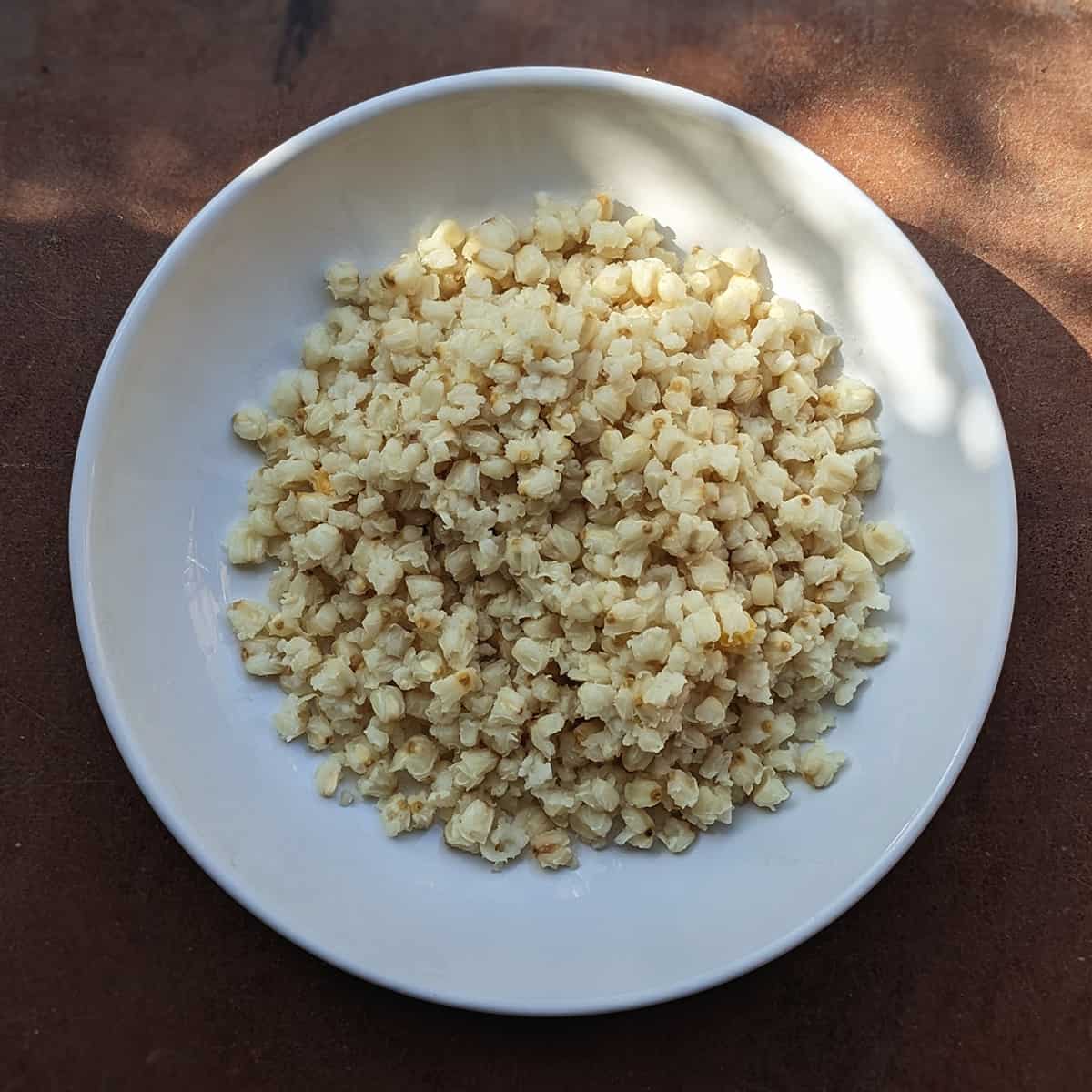
To make the chicken broth
Break the chicken into pieces and place in a large pot. Add the water, salt and bring to a boil. If you are preparing the vegetables for the soup at this time, throw in the ends, skins, and trimmings, but if you’re making this ahead of time, don’t worry about it. Lower the heat to a simmer for around an hour. Pull out the chicken pieces with tongs and strain the broth through a fine mesh strainer. Reserve the broth and pull the chicken meat from the bones once it’s cool enough to handle and reserve.
To make the soup
Place the chicken broth in a large pot and bring to a simmer. Bring a separate, large, heavy-bottomed pot to medium heat. Add the oil and after a minute, add the onions. Let them cook until they are just starting to caramelize. Add the garlic and cook another minute more. Add the tomatillos, mild green chile, fire-roasted poblanos, white parts of the spring onions, the cooked posole, and reserved chicken.
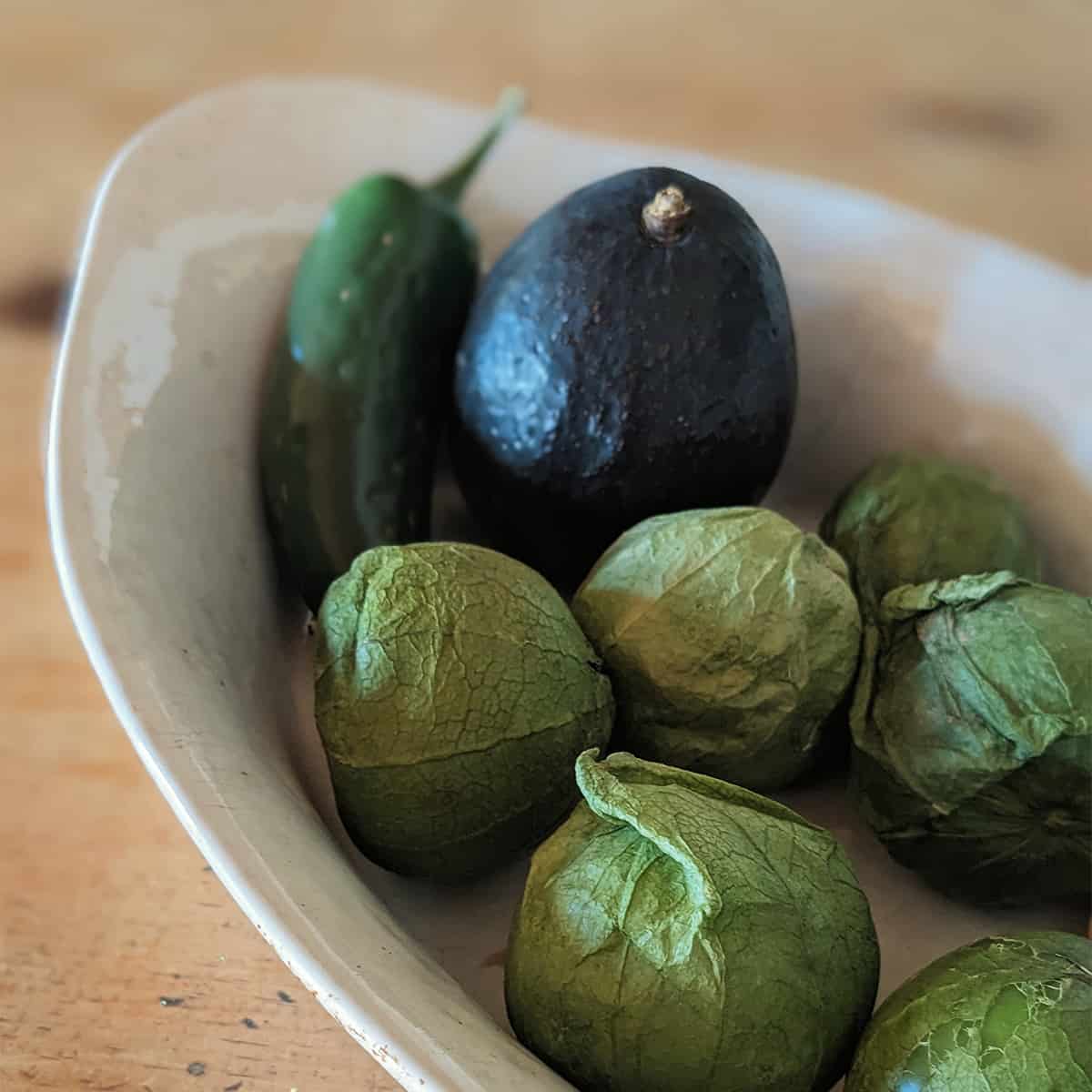
Place the parsley and cilantro in a blender, along with 6 cups of the hot chicken broth. Carefully blend until the broth is a bright green. Pour this and the remaining chicken broth into the pot with the posole mixture. Bring this to a simmer, taste, and adjust seasoning as needed.
Ladle into bowls and garnish with jalapeno, the green parts of spring onions and/or avocado. Enjoy!


